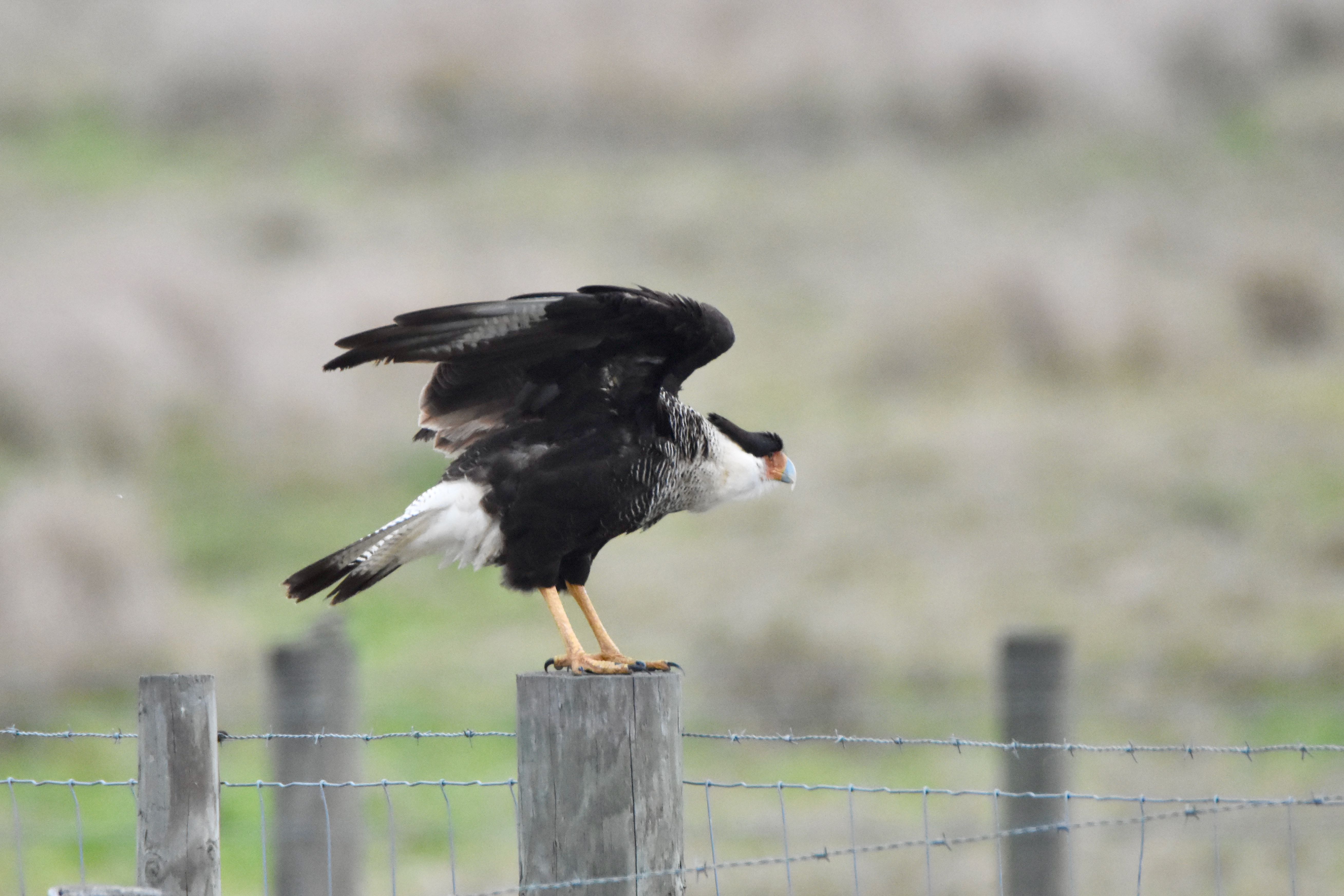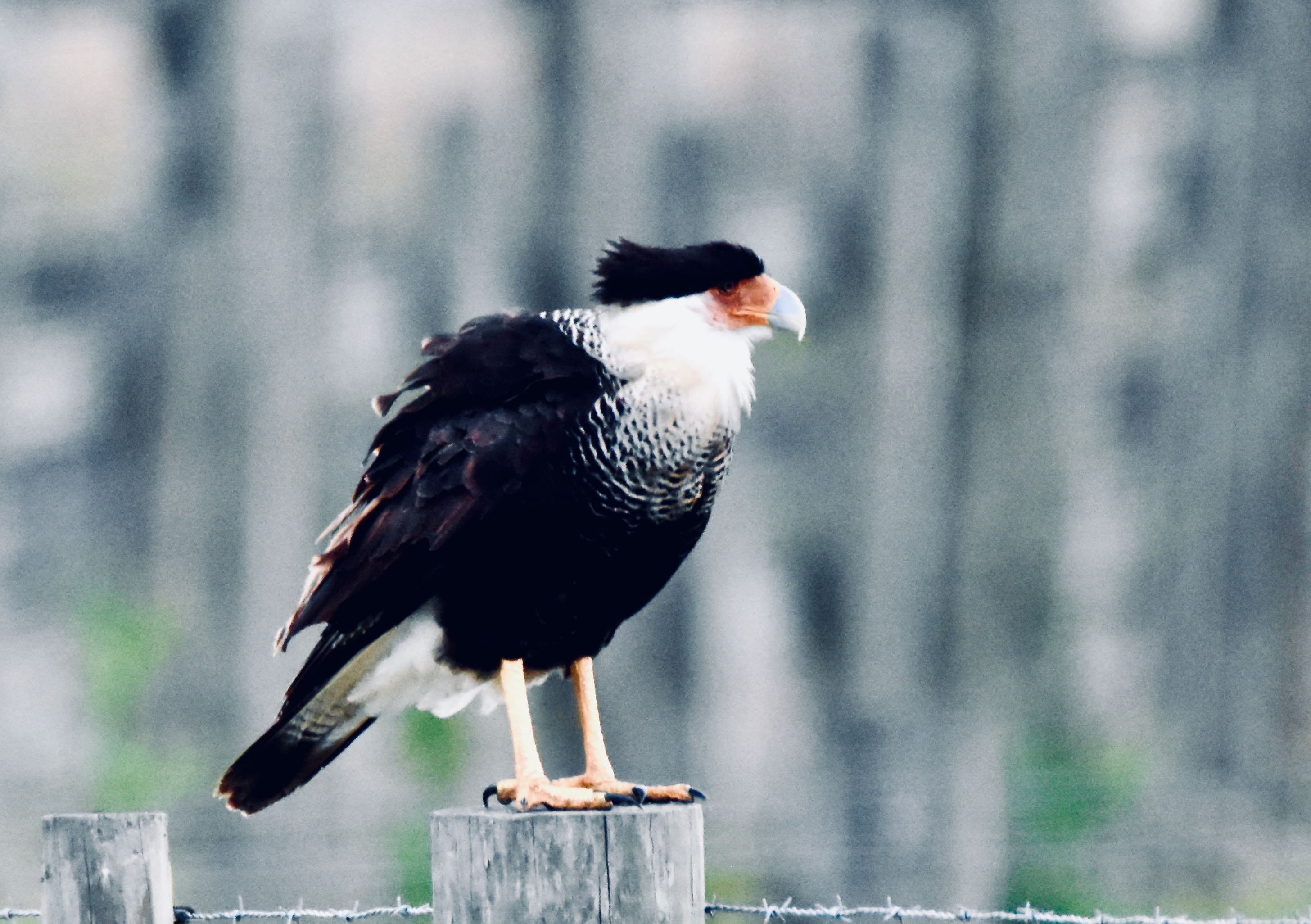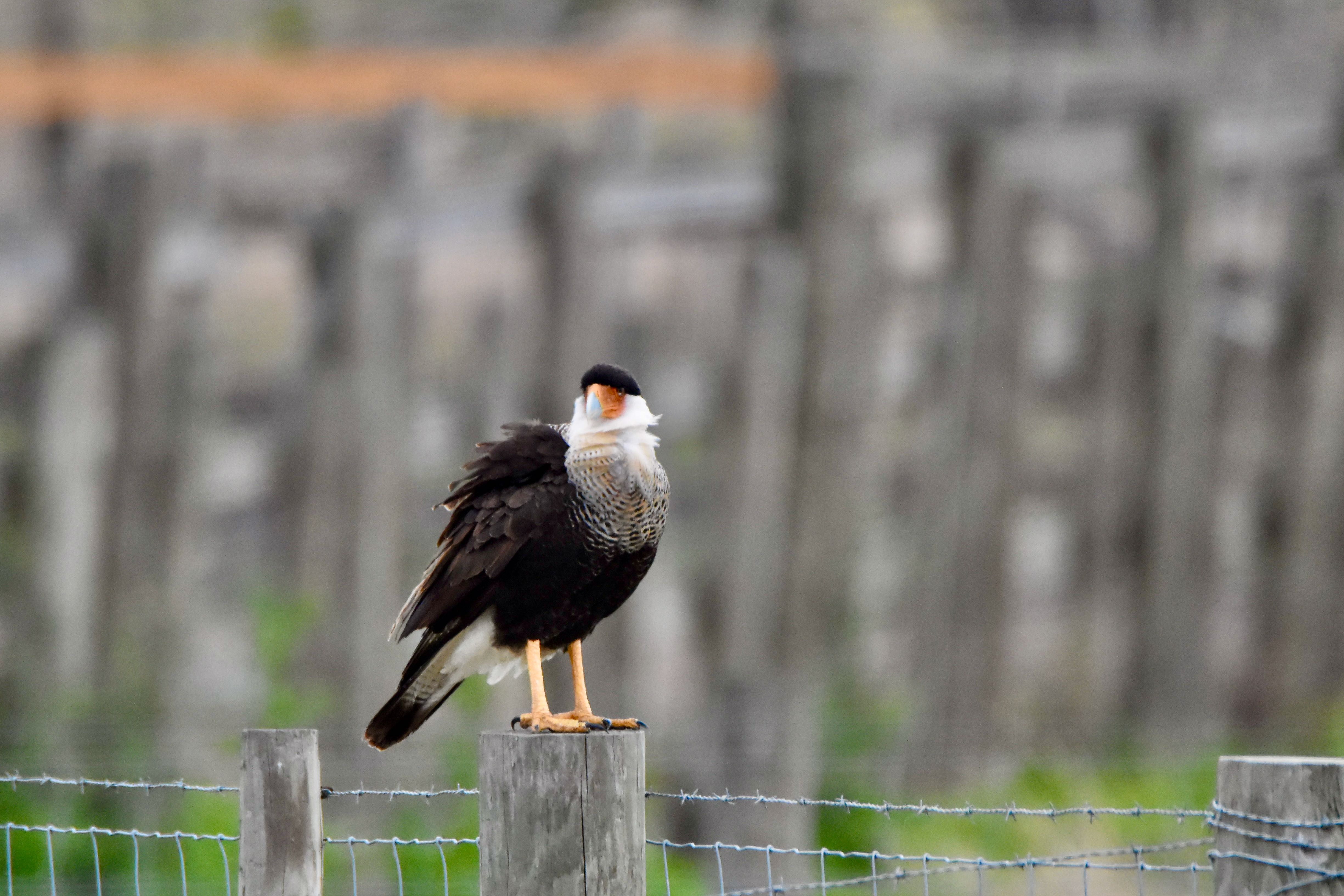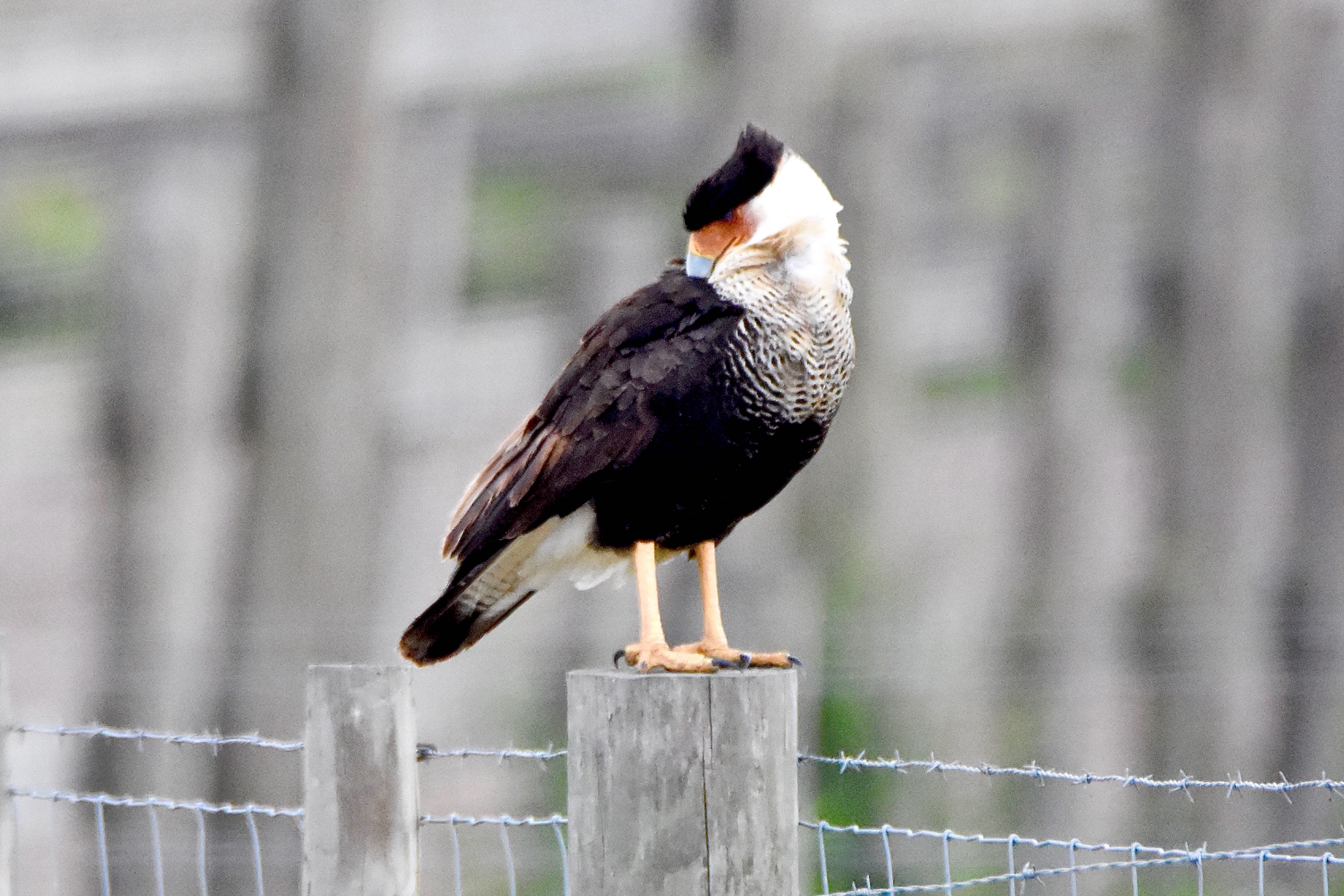
Crested caracara, photographed along Snake Road, Big Cypress Seminole Reservation, Broward County, in January 2018.
The crested caracara, Polyborus plancus, is a rare bird. Rare enough that we're tempted to call it exotic but not in the usual sense of a foreign species.
It is indeed a Florida native, but its numbers are small and restricted to the hinterlands of Central and South Florida. Combine its scarcity with its unusually distinctive looks and odd name and you have something exotic, at least in our minds.
The crested caracara is rare enough in Florida that it is listed as threatened under both the federal and state endangered species acts. It's also found in Cuba and the Isle of Pines, Mexico, Central America and parts of Peru and northern Brazil. Its global population is considered secure. Back in the U.S., the crested caracara's historical range includes Arizona, New Mexico, Texas and Louisiana. It's considered imperiled in Arizona and Louisiana, apparently extirpated, or extinct, within the borders of New Mexico, but secure in Texas. Its Florida range once stretched north of Orlando south to Collier County but is now largely limited to areas around Lake Okeechobee.
The crested caracara is a falcon and a large one at that. Its body length can exceed two feet and its wingspan can reach 50 inches. The face is red-orange, featherless, the bill large, blue-gray, almost translucent-looking, and hooked. A black crest caps the head. The crest lies flat when the bird is calm, rises when its agitated or on alert. The legs are long, yellow-orange, the throat and chest white, the body and wings generally dark brown to near black, with white patches on the wings and tail. The talons are raptor-like, but lie flatter than most, so the bird can run and walk more easily.
Its diet includes carrion, which creates one of the hazards facing the crested caracara. It will rise early and hunt along the highways for fresh roadkill. It's a habit that too often makes roadkill out of the crested caracara. The other big problem for the bird is loss of habitat.
Crested caracaras like dry or wet prairies marked with cabbage palms, and lightly wooded areas with saw palmetto and scrub oaks. They'll also take to pasturelands. Besides carrion, the crested caracara diet includes fish, snakes, birds, bird eggs, frogs, lizards, young alligators, rabbits, squirrels, skunks, opossums, bugs, worms and maggots. They'll also attack other birds in order to steal their food. They hunt while in flight, while perched and on the ground.
In Florida, nesting season runs from September to April, with January to March being the peak. Crested caracara nest primarily in cabbage palms, assembling a bulky structure from sticks, plant stalks and vines. They will use the same nest year after year or they'll use the nest of a different species. Clutches are typically two eggs; both parents share sitting duties, which generally last 30 days. Mom might do more sitting than dad. Both will feed their offspring, which will reach adult size at five weeks and fledge at seven or eight. They can have long lifespans; a bird in captivity reached 30 years.
The crested caracara is also known as the northern crested caracara, northern caracara and in Florida, Audubon's crested caracara. It is a member of Falconidae, the falcon family.
Snake Road, Big Cypress Seminole Reservation



